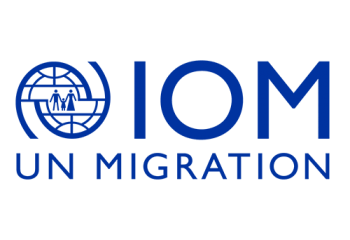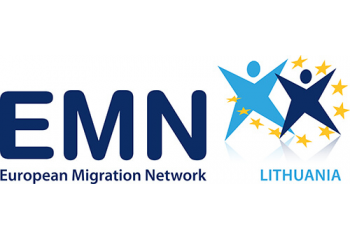Glossary
The EMN Glossary – as one of the key products of the EMN - improves comparability by enabling a common understanding and use of terms and definitions relating to asylum and migration. The Glossary draws on a variety of sources, but primarily on the legislation of the EU asylum and immigration acquis, and makes terms available in the majority of EU Member State languages.
The online version is regularly updated and available in various languages.
- BG: местен граничен трафик
- CZ: malý pohraniční styk
- DE: kleiner Grenzverkehr
- EE: kohalik piiriliiklus
- EN: local border traffic
- ES: tráfico fronterizo local
- FI: paikallinen rajaliikenne
- FR: trafic frontalier local
- GA: trácht teorann áitiúil
- GR: τοπική διασυνοριακή κυκλοφορία
- HU: kishatárforgalom
- IT: traffico frontaliero locale
- LT: vietinis eismas per sieną
- LV: vietējā pierobežas satiksme
- MT: Traffiku lokali mal-fruntiera / mal-konfini
- NL: klein grensverkeer
- NO: lokal grensetrafikk
- PL: mały ruch graniczny
- PT: pequeno tráfego fronteiriço
- RO: mic trafic de frontieră
- SE: lokal gränstrafik
- SK: malý pohraničný styk (EU acquis) / prihraničná doprava (national law)
- SL: lokalni obmejni promet
The regular crossing of an external land border by border residents in order to stay in a border area, for example for social, cultural or substantiated economic reasons, or for family reasons, for a period not exceeding three months.
- BG: законно влизане
- CZ: oprávněný vstup
- DE: legale Einreise
- EE: seaduslik (riiki) sisenemine
- EN: legal entry
- ES: entrada legal
- FI: laillinen maahantulo
- FR: entrée légale
- GA: iontráil dhleathach
- GR: νόμιμη είσοδος
- HU: legális beutazás / belépés
- IT: ingresso autorizzato
- LT: teisėtas atvykimas
- LV: likumīga ieceļošana
- MT: Dħul legali
- NL: legale binnenkomst
- NO: lovlig innreise (b) / lovleg innreise (n)
- PL: legalny wjazd
- PT: legalne przekroczenie granicy,
- RO: intrare legală
- SE: laglig inresa
- SK: oprávnený vstup (national law) / legálny vstup
- SL: zakonit vstop
In the Schengen context, and for a stay not exceeding three months per six-month period, the entry of a third-country national into a Schengen Member State in compliance with Art. 5 of the Regulation (EU) 2016/399 (Schengen Borders Code).
Schengen context: Derived by EMN from Art. 5 of Regulation (EC) No 562/2006 (Schengen Borders Code)
- BG: загуба на гражданство
- CZ: pozbytí státního občanství
- DE: Verlust der Staatsangehörigkeit / Staatsbürgerschaft
- EE: kodakondsuse kaotamine
- EN: loss of citizenship
- ES: pérdida de nacionalidad
- FI: kansalaisuuden menettäminen
- FR: perte de la citoyenneté
- GA: cailleadh saoránachta
- GR: απώλεια ιθαγένειας
- HU: állampolgárság elvesztése
- IT: perdita di cittadinanza
- LT: pilietybės netekimas
- LV: pilsonības zaudēšana
- MT: Telf ta’ ċittadinanza
- NL: verlies van het staatsburgerschap
- NO: tap av statsborgerskap (b) / tap av statsborgarskap (n)
- PL: utrata obywatelstwa
- PT: perda de nacionalidade
- RO: pierderea cetăţeniei
- SE: förlust av medborgarskap
- SK: strata štátneho občianstva
- SL: izguba državljanstva
Any mode of loss of the status as citizen of a country, voluntarily or involuntarily, automatically or by an act by the public authorities.
- BG: дългосрочен мигрант
- CZ: dlouhodobý migrant
- DE: langfristig aufhältiger Migrant, Langzeit-Migrant
- EE: pikaajaline sisserändaja
- EN: long-term migrant
- ES: persona migrante de carácter permanente
- FI: pitkään oleskellut maahanmuuttaja
- FR: migrant de longue durée
- GA: imirceach fadtéarmach
- GR: μετανάστης επί μακρόν διαμένων
- HU: huzamos tartózkodói jogállással rendelkező személy (not commonly used, ‘Letelepedett’ is used for persons who have the right to stay for an indefinite period)
- IT: migrante di lungo termine
- LT: ilgalaikis migrantas
- LV: ilgtermiņa migrants
- MT: Viża għal żjara / miġja / waqfa fit-tul
- NL: langverblijvende migrant (syn.: langdurige migrant)
- NO: migrant med langvarig opphold (b) / migrant med langvarig opphald (n)
- PL: migrant długookresowy
- PT: migrante de longa duração
- RO: migrant pe termen lung
- SE: långtidsmigrant
- SK: dlhodobý migrant
- SL: migrant za daljše obdobje
A person who moves to a country other than that of their usual residence for a period of at least a year (12 months), so that the country of destination effectively becomes their new country of usual residence.
- BG: дългосрочно пребиваващ
- CZ: dlouhodobě pobývající rezident
- DE: langfristig Aufenthaltsberechtigter
- EE: pikaajaline elanik
- EN: long-term resident
- ES: residente de larga duración
- FI: pitkään oleskellut
- FR: résident de longue durée
- GA: cónaitheoir fadtéarmach
- GR: επί μακρών διαμένων
- HU: huzamos tartózkodás jogával rendelkező személy
- IT: residente di lungo termine
- LT: ilgalaikis gyventojas
- LV: pastāvīgais iedzīvotājs
- MT: Migrazzjoni fit-tul
- NL: langdurig ingezetene
- NO: person med permanent oppholdtillatelse (b) / person med permanent opphaldsløyve (n)
- PL: rezydent długoterminowy
- PT: residente de longa duração
- RO: rezident pe termen lung
- SE: varaktigt bosatt
- SK: osoba s dlhodobým pobytom
- SL: rezident za daljše obdobje
A third-country national who has long-term resident status as provided for under Arts. 4 to 7 of Council Directive 2003/109/EC (Long Term Residents Directive) or as provided for under national legislation.
2. Directive 2011/51/EU of 11 May 2011 amended Council Directive 2003/109/EC (Long Term Residents Directive) to extend its scope of application to beneficiaries of international protection.
3. The UN Recommendations on Statistics on International Migration set one year of intended residence as the lower threshold.
- BG: виза за дългосрочно пребиваване
- CZ: dlouhodobé vízum
- DE: Visum für den längerfristigen Aufenthalt, (EU acquis) / Langzeit-Visum
- EE: pikaajaline viisa
- EN: long-stay visa
- ES: visado para estancia de larga duración
- FI: pitkäaikainen viisumi
- FR: visa de long séjour
- GA: víosa fadchuairte
- GR: θεώρηση για διαμονή μακράς διαρκείας
- HU: hosszú távú tartózkodásra jogosító vízum
- IT: visto per soggiorno di lunga durata
- LT: ilgalaikė viza
- LV: ilgtermiņa vīza
- MT: Resident(a) fit-tul
- NL: visum voor verblijf van langere duur
- NO: oppholdstillatelse (b) / opphaldsløyve (n)
- PL: wiza długoterminowa
- PT: visto de longa duração
- RO: viză de lungă şedere
- SE: visering för längre vistelse
- SK: dlhodobé vízum
- SL: vizum za dolgoročno bivanje
The authorisation or decision issued by one of the EU Member States in accordance with its national law or Union law required for entry for an intended stay in that EU Member State of more than three months.
- BG: дългосрочна миграция
- CZ: dlouhodobá migrace
- DE: langfristige Migration / Langzeit-Migration
- EE: pikaajaline sisseränne
- EN: long-term migration
- ES: migración de larga duración
- FI: pitkäaikainen maahanmuutto
- FR: migration de longue durée
- GA: imirce fhadtéarmach
- GR: μακροχρόνια μετανάστευση
- HU: huzamos idejű tartózkodási céllal történő migráció
- IT: migrazione di lungo termine
- LT: ilgalaikė migracija
- LV: ilgtermiņa migrācija
- MT: Migrant(a) fit-tul / għal żmien twil
- NL: lange-termijnmigratie
- NO: langtidsmigrasjon
- PL: migracja długookresowa
- PT: migração de longa duração
- RO: migraţie pe termen lung
- SE: långtidsmigration
- SK: dlhodobá migrácia
- SL: migracija za daljše obdobje
Movement of individuals who change their country of usual residence for a period of at least one year, so that the country of destination effectively becomes their new country of usual residence.
Long-term migration' and 'permanent migration' are often understood as quasi-synonyms. The Organisation for Economic Co-operation and Development (OECD) defines permanent migration as 'a concept relating to undertaking migration with a view to, or which results in, settling on a permanent basis in the country of destination.
- BG: тест на пазара на труда
- CZ: test trhu práce
- DE: Arbeitsmarkttest
- EE: tööturu test
- EN: labour market test
- ES: Catálogo de ocupaciones de difícil cobertura
- FI: työvoiman saatavuusharkinta
- FR: examen du marché de l’emploi / du travail
- GA: tástáil sa mhargadh fostaíochta
- HU: munkaerőpiaci felmérés
- IT: analisi del mercato del lavoro
- LT: darbo rinkos testas
- LV: darba tirgus tests
- MT: Test dwar is-suq tax-xogħol
- NL: arbeidsmarkttoets
- NO: arbeidsmarkedsvurdering (b) / arbeidsmarknadsvurdering (n)
- PL: test rynku pracy
- RO: testarea pieţei forţei de muncă
- SE: arbetsmarknadsprövning
- SK: skúmanie situácie na trhu práce
- SL: pregled trga dela
Mechanism that aims to ensure that migrant workers are only admitted after employers have unsuccessfully searched for national workers, EU citizens (in EU Member States this also means EEA workers) or legally residing third-country nationals with access to the labour market according to national legislation.
2. EU Member States apply different methodologies in undertaking LMTs. In general, a considerable role is left to employers and public employment services. Duration of the verification process varies among EU Member States.
3. For further information, see EMN: Satisfying labour demand through migration, June 2011.
- BG: трудова миграция
- CZ: pracovní migrace
- DE: Arbeitsmigration
- EE: tööränne
- EN: labour migration
- ES: migración laboral
- FI: työvoiman muuttoliike, työperusteinen maahanmuutto
- FR: migration de travail / migration de main-d’oeuvre
- GA: imirce lucht oibre
- GR: οικονομική μετανάστευση; μετανάστευση για εργασία
- HU: munkavállalási célú migráció
- IT: migrazione per motivi di lavoro
- LT: darbo jėgos migracija
- LV: darbaspēka migrācija
- MT: Migrazzjoni għal raġunijiet ta’ xogħol
- NL: arbeidsmigratie
- NO: arbeidsmigrasjon
- PL: migracja pracownicza
- PT: migração laboral
- RO: migraţie în scop de muncă
- SE: arbetskraftsmigration
- SK: pracovná migrácia
- SL: delovna migracija
Movement of persons from one state to another, or within their own country of residence, for the purpose of employment.
Labour migration is addressed by most States in their migration laws. In addition, some States take an active role in regulating outward labour migration and seeking opportunities for their nationals abroad.
- BG: Договорът от Лисабон
- CZ: Lisabonská smlouva
- DE: Vertrag von Lissabon
- EN: Lisbon Treaty
- ES: Tratado de Lisboa
- FI: Lisbonin sopimus
- FR: Traité de Lisbonne
- GA: Conradh Liospóin
- GR: Η Συνθήκη της Λισαβόνας
- HU: Lisszaboni Szerződés
- IT: Trattato di Lisbona
- LT: Lisabonos sutartis
- LV: Lisabonas līgums
- MT: Trattat (It-) ta’ Lisbona
- NL: Verdrag van Lissabon
- NO: Lisboa-traktaten
- PL: Traktat Lizboński
- SE: Lissabonfördraget
- SK: Lisabonská zmluva
- SL: Lizbonska pogodba
An international agreement - initially known as the Reform Treaty - which amends the two treaties that form the constitutional basis of the European Union and which aims to enhance the efficiency and democratic legitimacy of the European Union and to improve the coherence of its actions.
2. Prominent changes included the move from unanimity to qualified majority voting in at least 45 policy areas in the Council of Ministers, a change in calculating such a majority to a new double majority, a more powerful European Parliament forming a bicameral legislature alongside the Council of ministers under the ordinary legislative procedure, a consolidated legal personality for the EU, and the creation of a long-term President of the European Council and a High Representative of the Union for Foreign Affairs and Security Policy. The Treaty also made the Union's bill of rights, the Charter of Fundamental Rights of the European Union, legally binding.
3. The Treaty of Lisbon broadened the competences of the EU in asylum issues. According to Art. 78 TFEU, a common policy on asylum is developed through the ordinary legislative procedure. There is no mentioning of minimum standards as before which sets the aim to convergence. The Article provides for the legal basis for the Common European Asylum System (CEAS). For further information, see the entry for 'Common European Asylum System (CEAS)' in this EMN Glossary.
4. For more information see the website of the Lisbon Treaty.


